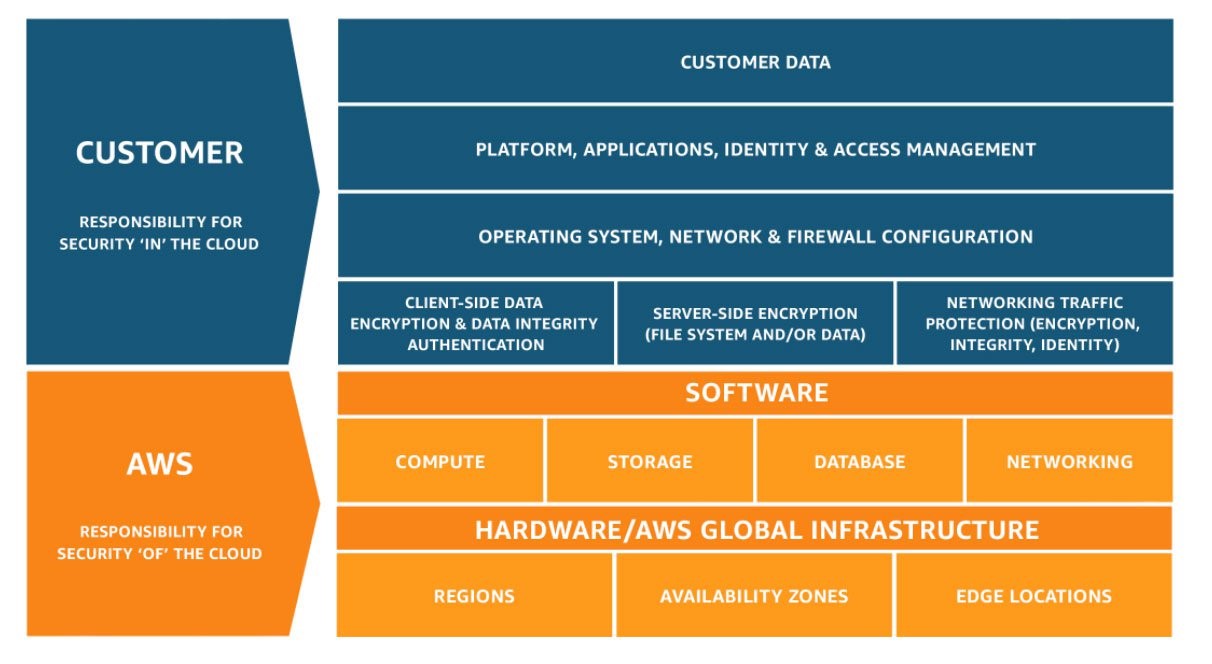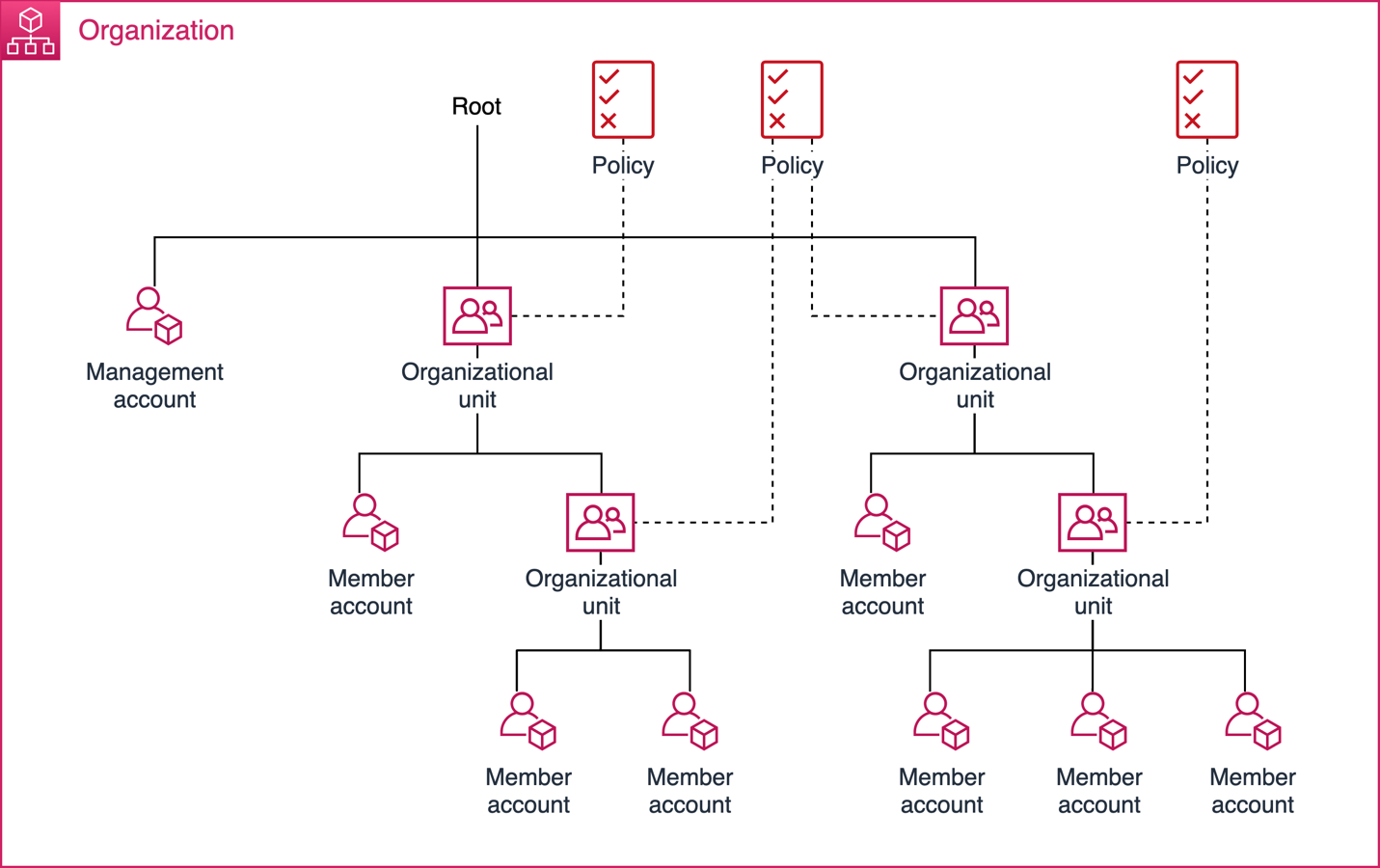Question
Time left
Score
0
What is the answer to this questions?
A
Choice 1
B
Choice 2
C
Choice 3
D
Choice 4
0
Cloud Concepts Exam Details (26%)
- Define the AWS Cloud and its value proposition
- Identify aspects of AWS Cloud economics
- List the different cloud architecture design principles
1
DAAS
Amazon WorkSpaces provides a Desktop as a Service (DaaS) solution.
2
Shared Responsibility model
Customers are responsible for the storage and securing of their own data.
3
AZ and Regions
Each region contains multiple availability zones.
4
Elasticity
The ability to acquire resources as you need them and release resources when you no longer need them. In the cloud, you want to do this automatically.
5
Amazon Virtual Private Cloud (Amazon VPC)
Amazon Virtual Private Cloud (Amazon VPC) lets you provision a logically isolated section of the AWS Cloud where you can launch AWS resources in a virtual network that you define. You have complete control over your virtual networking environment, including the selection of your own IP address range, creation of subnets, and configuration of route tables and network gateways. You can use both IPv4 and IPv6 in your VPC for secure and easy access to resources and applications.
6
Searching Service in the Cloud
Amazon CloudSearch and Amazon ElasticSearch are the two services on AWS you can choose for searches. Amazon CloudSearch is a managed service in the AWS Cloud that makes it simple and cost-effective to set up, manage, and scale a search solution for your website or application.
7
Auto Scaling Group
The Auto Scaling Group can be used to scale out and scale in the instances as the demand dictates. This will save money and avoid having instances sitting idle for long periods of time. AWS Auto Scaling monitors your applications and automatically adjusts your capacity to maintain steady, predictable performance at the lowest possible cost. Using AWS Auto Scaling, it’s easy to set up application scaling for multiple resources across multiple services in minutes.
8
Virtual Private Gateway (VPG)
A virtual private gateway is a logical, fully redundant distributed edge routing function that sits at the edge of your VPC. As it is capable of terminating VPN connections from your on-prem or customer environments, the VPG is the VPN concentrator on the Amazon side of the Site-to-Site VPN connection.
9
Think Parallel
Multipart uploads use multithreading to upload large files to S3 buckets in parallel (the parts of the file are uploaded in parallel).
10
Reliability Pillar
The reliability pillar includes the ability of a system to recover from infrastructure or service disruptions, dynamically acquire computing resources to meet demand, and mitigate disruptions such as misconfigurations or transient network issues. The operational excellence pillar includes the ability to run and monitor systems to deliver business value and to improve supporting processes and procedures continually.
11
Vertical Scaling
Vertical Scaling is increasing the size and computing power of a single instance or node without increasing the number of nodes or instances.
12
Which are right principles when designing cloud based systems?
- Build loosely-coupled components
- Assume everything will fail
13
Explain Cloud Service Models
There are three types of Cloud Service Models:
- Infrastructure as a service (IaaS)
- Platform as a service (PaaS)
- Software as a service (SaaS)
14
What are Hybrid clouds?
- Hybrid clouds are made up of both public clouds and private clouds. It is preferred over
both the clouds because it applies the most robust approach to implement cloud architecture.
The hybrid cloud has features and performance of both private and public cloud. It has an
important feature where the cloud can be created by an organization and the control of it can be
given to some other organization.
-
15
Explain Platform as a Service (Paas)?
- It is also a layer in cloud architecture. Platform as a Service is responsible to provide
complete virtualization of the infrastructure layer, make it look like a single server and invisible
for the outside world.
-
16
What is the difference in cloud computing and Mobile Cloud computing?
- Mobile cloud computing and cloud computing has the same concept. The cloud computing
becomes active when switched from the mobile. Moreover, most of the tasks can be performed
with the help of mobile. These applications run on the mobile server and provide rights to the
user to access and manage storage.
-
17
What are the security aspects provided with the cloud?
There are 3 types of Cloud Computing Security:
- Identity Management: It authorizes the application services.
- Access Control: The user needs permission so that they can control the access of
another user who is entering into the cloud environment.
- Authentication and Authorization: Allows only the authorized and authenticated the user
only to access the data and applications
18
What are system integrators in cloud computing?
- System Integrators emerged into the scene in 2006. System integration is the practice of
bringing together components of a system into a whole and making sure that the system
performs smoothly.
A person or a company which specializes in system integration is called as a system integrator
-
19
What is the usage of utility computing?
- Utility computing, or The Computer Utility, is a service provisioning model in which a service
provider makes computing resources and infrastructure management available to the customer
as needed and charges them for specific usage rather than a flat rate
Utility computing is a plug-in managed by an organization which decides what type of services
has to be deployed from the cloud. It facilitates users to pay only for what they use.
20
Explain the difference between cloud and traditional data centers?
- In a traditional data center, the major drawback is the expenditure. A traditional data center is
comparatively expensive due to heating, hardware, and software issues. So, not only is the
initial cost higher, but the maintenance cost is also a problem.
Cloud being scaled when there is an increase in demand. Mostly the expenditure is on the
maintenance of the data centers, while these issues are not faced in cloud computing.
-
20
What is CaaS?
- CaaS is a terminology used in the telecom industry as Communication As a Service. CaaS
offers to the enterprise user features such as desktop call control, unified messaging, and
desktop faxing.
-
21
What is hypervisor in Cloud Computing?
- It is a virtual machine screen that can logically manage resources for virtual machines. It
allocates, partition, isolate or change with the program given as virtualization hypervisor.
Hardware hypervisor allows having multiple guest Operating Systems running on a single host
system at the same time.
22
Define what MultiCloud is?
- Multicloud computing may be defined as the deliberate use of the same type of cloud services
from multiple public cloud providers.
-
23
What is a multi-cloud strategy?
- The way most organizations adopt the cloud is that they typically start with one provider. They
then continue down that path and eventually begin to get a little concerned about being too
dependent on one vendor. So they will start entertaining the use of another provider or at least
allowing people to use another provider.
They may even use a functionality-based approach. For example, they may use Amazon as
their primary cloud infrastructure provider, but they may decide to use Google for analytics,
machine learning, and big data. So this type of multi-cloud strategy is driven by sourcing or
procurement (and perhaps on specific capabilities), but it doesn’t focus on anything in terms of
technology and architecture.
-
24
To what is, a pay-as-you-go model matches resources to need on an ongoing basis.
- Utility. This eliminates waste and has the additional advantage of shifting risk from the
consumer.
-
25
You utilize the feature permits you to optimize your system and capture all possible
transactions
- Elasticity. You have the ability to modify the resources as required
-
25
Name all the kind of virtualization that are also characteristic of cloud computing?
- Storage, Application, CPU. To modify these characteristics, resources should be extremely
configurable and versatile.
-
26
What is boot time taken for the instance stored backed AMI?
- The boot time for an Amazon instance store-backend AMI is less than 5 minutes
-
27
Do you need an internet gateway to use peering connections?
- Yes, the Internet gateway is needed to use VPC (virtual private cloud peering) connections.
-
28
How to connect EBS volume to multiple instances?
- We can’t be able to connect EBS volume to multiple instances. Although, you can connect
various EBS Volumes to a single instance.
-
29
What are the different types of Load Balancer in AWS services?
- Application Load Balancer
- Classic Load Balance
30
What are the important features of Amazon cloud search?
- Boolean searches
- Prefix Searches
- Range searches
- Entire text search
- AutoComplete advice
-
31
In which situation you will select provisioned IOPS over standard RDS storage?
- You should select provisioned IOPS storage over standard RDS storage if you want to perform
batch-related workloads.
-









